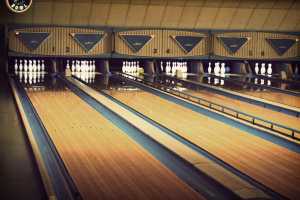
photo credit: ginnerobot via photopin cc
Author: Jarod Bona
Antitrust injury is one of the most commonly fought battles in antitrust litigation. It is also one of the least understood antitrust concepts.
No matter what your antitrust theory, it is almost certain that you must satisfy antitrust-injury requirements to win your case. So you ought to have some idea of what it is.
The often-quoted language is that antitrust injury is “injury of the type the antitrust laws were intended to prevent and that flows from that which makes the defendant’s acts unlawful.” You will see this language—or some variation of it—in most court opinions deciding antitrust-injury issues. The language and the analysis are from the Classic Antitrust Case entitled Brunswick Corp. v. Pueblo Bowl-O-Mat, Inc., decided by the US Supreme Court in 1977.
For more, you can read our article on the Bona Law website describing antitrust injury.
Brunswick Corp. v. Pueblo Bowl-O-Mat, Inc.
If your antitrust attorney is drafting a brief on your behalf and antitrust injury is in dispute—which is quite likely—he or she will probably cite Brunswick Corp.
Since antitrust injury is synonymous with Brunswick Corp., let’s talk about the actual case for a moment. If you are passionate about bowling-alley markets, you’ll love this case.
If you were around in the 1950s, you probably know that bowling was a big deal. The industry expanded rapidly, which was great for manufacturers of bowling equipment. But sometimes good things come to an end and the bowling industry went into a sharp decline in the early 1960s. These same manufacturers began to have trouble, as bowling alleys starting paying late or not at all for their leased equipment.
A particular bowling-equipment manufacturer—Brunswick Corp—began acquiring and operating defaulted bowling centers when they couldn’t resell the leased equipment. For a period of seven years, Brunswick acquired 222 centers, some that it either disposed of or closed. This buying binge turned it into the largest operator of bowling centers, by far. If you are a fan of The Big Lebowski, you might notice that the Dude spends substantial time at a Brunswick bowling alley.
Brunswick’s buying binge was a problem for a competing bowling-alley operator and competitor, Pueblo Bowl-O-Mat, who sued under the Clayton Act, arguing that certain Brunswick acquisitions in their territory “might substantially lessen competition or tend to create a monopoly.” Without the acquisition, the purchased bowling alleys would have gone out of business, which would have benefited Pueblo, a competitor.
The case eventually made its way to the US Supreme Court, which rejected the Clayton Act claim for lack of antitrust injury. The reason is that even though Pueblo was, indeed, harmed by the acquisition, it wasn’t a harm that the antitrust laws were meant to protect. The acquisition actually increased competition. Absent the acquisition, Pueblo would have gained market share. But with the acquisition, the market included both Pueblo and the bowling alleys that would have left the market—i.e. more competition.
It is as simple as that. A plaintiff cannot recover under the antitrust laws for an action that actually increases rather than decreases competition, even if the plaintiff is harmed. The injury isn’t “antitrust” injury.
The Elements of Antitrust Injury
From Brunswick Corp., we can extract two elements to antitrust injury:
First, the claimed injury must be of the type the antitrust laws were intended to prevent. That is, the challenged conduct must be competition-reducing, not competition-increasing or competition-neutral. The antitrust laws, as I am sure you know by now, are meant to protect competition. And the often-quoted corollary is that the antitrust laws protect competition, not competitors. So an action that harms a competitor—the plaintiff—is not an antitrust violation unless that conduct harms competition itself.
So what sort of injury is harm to competition? If a competitor is suing, the harm is usually related to that competitor’s exclusion or foreclosure from a market that it was either already in or about to enter. If a consumer is suing, the harm is usually related to overpaying for a product or service (higher prices or reduced quality). Competitive harm can also arise from reduced choice.
Second, the defendant’s antitrust violation must have proximately caused the plaintiff’s injury. This is basic causation. If the plaintiff was harmed by something other than the defendant’s antitrust violation, there is no antitrust injury. This is the commonplace injury/causation requirement that isn’t unique to antitrust law.
But watch for this factual scenario: the defendant engages in all sorts of conduct, some of it anticompetitive and some that isn’t anticompetitive. A plaintiff may be a fierce competitor that is affected by much of defendant’s conduct and has clearly been harmed; perhaps it went out of business. To determine whether that plaintiff can satisfy antitrust-injury requirements, the court should analyze which of defendant’s actions—the anticompetitive ones or the non-anticompetitive ones—knocked plaintiff out of the market. This may not be easy to do.
Do you want to read about more classic antitrust cases?
 The Antitrust Attorney Blog
The Antitrust Attorney Blog


